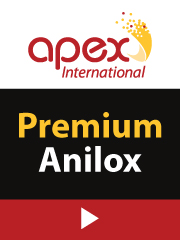In-Mold Labeling Makes Strides Worldwide
- Published: January 01, 2001, By David Bentley, Contributing Editor
In-mold labels keep making inroads as technologies and materials improve.
The ninth annual International In-Mold Labeling Conference at the Marriott Hotel in Amsterdam, Netherlands, Sept. 26-27, 2000, showcased the global character of the industry. Approximately 75 registrants from 18 countries gathered for 20 technical presentations under the general theme of "IML the World Over." Audience members included equipment manufacturers, molders, printers, suppliers, converters, and end-users.
Ronald B. Schultz, president of conference organizer RBS Technologies, noted in opening remarks that nobody "can survive in this frantic business world in isolation. We have become increasingly interdependent and are better for it."
Schultz added, "From a market size of only about US$10 million in 1980, IML for packaging worldwide is now about US$250 million. This is an average compound annual growth rate of approximately 17 percent."
Pre-cut labels were covered by Paul Bagnall of Innavisions. Bagnall stated that reel-fed IML has many potential advantages from a molding and material cost point of view. "The future of reel-fed IML depends on the success of shorter run, cost-effective printing techniques such as UV flexography," he predicted. "If this proves to be the case, the engineering complexities of reel-fed systems will improve through evolution."
Successful in-mold label production requires special ink formulations, printing processes, and converting needs. These were the subjects of a talk by Fred E. Zinnbauer of Akzo Nobel Inks. He listed the press requirements for IML production as high print quality, tight registration, low and consistent tension control, and the ability to print a variety of substrates. A press also must have good heat management in the curing system and press design so it can handle the extensible films used for IML.
Karlheinz Wolf of Trespaphan noted that OPP films used for IML applications must meet a large range of different requirements dictated by the printing of the film, the die-cutting and feeding of a label, the injection molding process, and the shape and size of a molded product. Some film types developed especially for label applications are commercially available.
Michael Bethge of Avery Dennison in Germany said that market trends influencing the films used for IML include the no-label look, high quality printing, economic considerations, recyclability, anti-counterfeiting, and globalization. Bethge stated that the "lack of a sharp interface between a label and a container greatly reduces delamination, loosening, and wrinkling of labels" when using IML.
Steve Monroe of Polyweave Intl. described a synthetic, paper-like substrate designed specifically for IML applications. Made from discrete polyolefin fibers on a traditional paper machine, the product combines the blister resistance of paper with the recycling characteristics of a plastic film.
Holographic labels now are possible on metallized paper, metallized plastic film, plain paper, and plain plastic film, according to Dario Sinigaglia of Print 92 Nederland BV. He said that small holograms up to about 1 x 1 in. are feasible also.
Ott Jensen of J.W. Fergusson & Sons said the "best and most cost-effective way to produce in-mold labels for the medium- to large-volume market is on a rotogravure press."
Double coating technology, logistics systems, metallic inks, prepress solutions, and a reel-to-sheet cutter help converters gain a competitive edge in the packaging and label segment, said Kilian Renschler of Heidelberger Druckmaschinen.
David Howard of Johnson & Johnson Medical advised that IML has a future in the medical and regulated industries.
The tenth In-Mold Labeling Conference will be at the Camelback Inn Marriott in Scottsdale, AZ, Sept. 24-26, 2001. Individuals interested in giving technical presentations, exhibiting, or attending can obtain additional information at the RBS Technologies Inc. website at imlcon.com.












